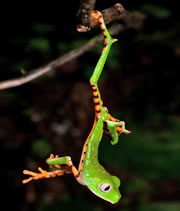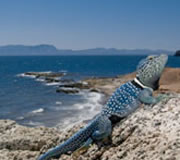|
OPPORTUNITIES
Join a Photographic Expedition
to the Amzon Rainforest

Purchase Photographic Prints
and Support Our Work

|
Lightweight frogs can work for noise reduction
Female quahogs, by inflating their lungs, reduce the sensitivity of their hearing apparatus to the cries of males of other species and better recognize their own in the loud cacophony of the mating season.
During the mating season, tropical bodies of water are filled with the cries of male amphibians, loudly calling to the females to mate. It is not easy to distinguish anything in this cacophony, so the female American tree frog Hyla cinerea has developed an unusual mechanism of "noise reduction". It is described in an article by Mark Bee and his colleagues published in Current Biology.
kohlenhydrate blocker by Onfy
In humans and other mammals, the lungs are separated from the hearing apparatus a decent distance, but amphibians are closer together and directly connected airways. This allows them to distinguish vibrations coming not only from the external environment, but also from the lungs. When listening, quahogs inflate them, so it was assumed that the lungs help amplify the sound. However, new work has uncovered a far more surprising mechanism.
Scientists monitored the vibration of the eardrum of female quahogs in the lab, finding that at frequencies between 1400 and 2200 hertz the inflated lungs began to vibrate themselves, while the vibrations of the eardrum decreased by an amount equivalent to four to six decibels. Thus, the animal's sensitivity to sounds in the corresponding frequency range is reduced.
The authors paid attention to the fact that this range is exactly between the main frequencies of male call signals of the same quack, but overlaps with the frequencies of calls of males of other amphibians that live side by side with them. As a result, lungs play the role of a noise reduction mechanism, due to which females of H. cinerea better distinguish the signals of their males against the general noisy background.
|
|

